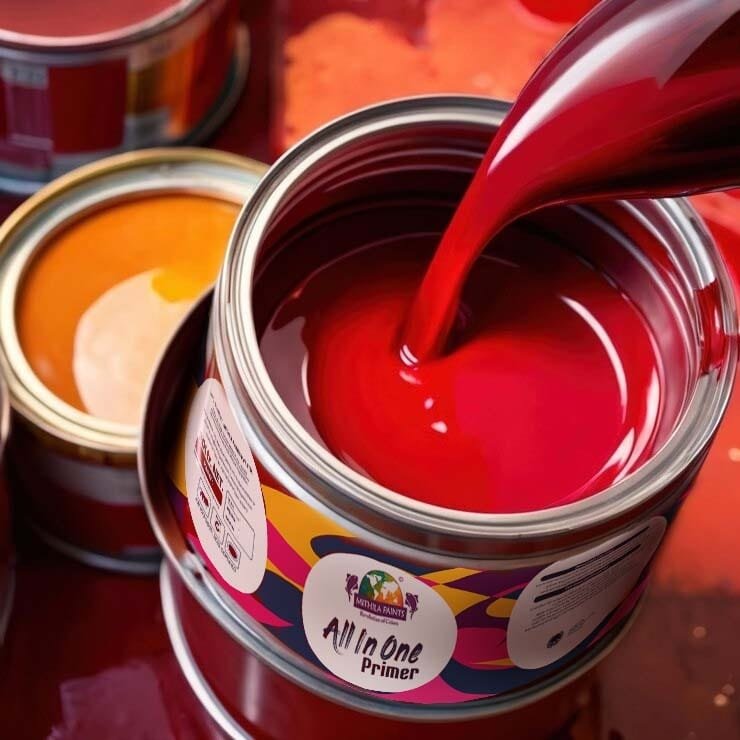Introduction to Budget-Friendly Texture
Mithila paints, originating from the Mithila region of Bihar, India, are a traditional form of art that reflects the rich cultural heritage and creativity of the local community. This unique style of painting has been practiced for centuries, primarily by women, and has transcended generations, preserving the vibrant history and folklore of the area. Initially, these intricate designs were created on mud walls of homes and were part of ritualistic ceremonies, often intended to bring prosperity and happiness to the household.
The significance of Mithila paintings lies not only in their aesthetic appeal but also in their ability to narrate stories from mythology, nature, and daily life. The paintings are characterized by the use of bright colors derived from natural sources, such as plants and minerals, and employ a variety of artistic techniques. Local artisans utilize fine lines and detailed patterns to create vivid representations of deities, animals, and other cultural elements. Over time, the medium has evolved, and artisans have begun to use materials such as cloth and paper, which has enabled Mithila art to reach a broader audience globally.
Today, Mithila paints play a pivotal role in texture manufacturing, given their visually striking qualities and cultural authenticity. The paints provide an opportunity for innovative applications in various fields, including fashion, home décor, and graphic design. By integrating these traditional artistic elements into modern products, manufacturers can offer unique textures that resonate with consumers seeking authenticity and craftsmanship. The rich heritage of Mithila paints not only helps preserve the cultural identity of the Mithila region but also encourages sustainable practices by supporting local artisans and their craft.
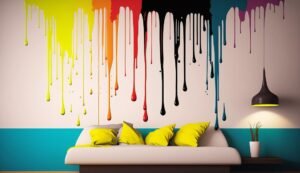
Understanding Texture Manufacturing
Texture manufacturing refers to the process of creating various surface finishes and tactile qualities in products across multiple industries. This method is especially significant in fields such as interior design, furniture production, and consumer goods. The right texture can fundamentally alter the perception and functionality of a product, making it essential for designers to understand the implications of texture in their projects. In the realm of interior design, texture plays a crucial role in establishing a desired ambiance and enhancing visual interest.
Mithila paints, derived from the rich cultural heritage of the Mithila region in India, offer unique opportunities for texture creation. These traditional artworks are known for their intricate patterns and vivid colors, which can be adapted into textured finishes. Through the application of Mithila paints, various types of textures can be achieved, such as smooth, rough, or layered effects, contributing to a more dynamic appearance in home decors. For instance, a wall adorned with a textured Mithila painting not only serves as a focal point but also introduces depth and character to a room.
The benefits of implementing textured finishes into home decors are manifold. Textures can evoke different emotions and atmospheres, such as warmth from cozy, rough surfaces or sophistication from sleek, polished finishes. Furthermore, employing a variety of textures can guide the viewer’s eye around a space, engaging visitors and enhancing the overall experience. As homeowners increasingly seek to personalize their environments, the versatility of Mithila paints stands out, allowing for a blend of traditional artistry with contemporary design principles.
Overall, understanding the concept of texture manufacturing, particularly through the use of Mithila paints, is invaluable for both product development and creative interior design. The integration of textured finishes enhances aesthetic appeal while enriching the narrative of a space.
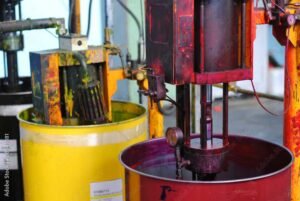
The Benefits of Using Mithila Paints for Texturing
Mithila paints are increasingly recognized for their numerous advantages in texture manufacturing, particularly among budget-conscious consumers and manufacturers who prioritize sustainability. One of the key benefits of Mithila paints is their eco-friendliness. These paints are primarily made from natural ingredients, making them biodegradable and reducing the environmental impact associated with synthetic alternatives. This aspect not only aligns with the growing trend of sustainability but also appeals to environmentally conscious consumers who seek to minimize their carbon footprint.
In addition to being environmentally friendly, Mithila paints are also cost-effective. Their affordability enables manufacturers to produce textured surfaces without incurring high expenses, making them an attractive option for projects with limited budgets. Moreover, the long-lasting nature of these paints means that they require fewer reapplications over time, leading to greater savings on maintenance costs. This economic advantage is further enhanced when one considers the increasing demand for sustainable products, which often translates to a competitive market edge.
Versatility is another significant benefit of Mithila paints. These paints can be used across various surfaces and materials, expanding their applications in residential, commercial, and artistic projects. Their adaptability allows for unique texturing techniques that can accommodate different styles and preferences, appealing to a wide demographic of consumers. Furthermore, the visual appeal of Mithila paints sets them apart, as they feature intricate designs and vibrant colors that enhance the aesthetics of any project. This unique visual quality not only elevates the value of the finished product but also resonates with consumers who appreciate the cultural significance embedded in this traditional art form.
Overall, the eco-friendliness, cost-effectiveness, versatility, and distinct visual appeal of Mithila paints position them as an exceptional choice for texture manufacturing, catering to those who are both budget-minded and environmentally aware.
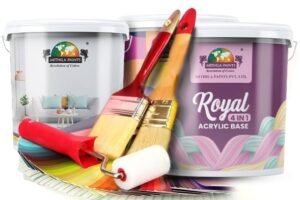
Cost-Effective Techniques for Texture Manufacturing
Texture manufacturing utilizing Mithila paints can be an engaging and affordable venture. To start, it is essential to gather the necessary tools that can enhance your creativity while minimizing costs. Common tools include spatulas, brushes, and sponges, which can be found at local craft stores or even repurposed from household items. Additionally, inexpensive containers for mixing your paints are crucial for maintaining an organized workspace.
One budget-friendly approach to create texture is through DIY methods such as sponging or stippling. For sponging, dab a damp sponge into the Mithila paint and gently apply it onto the surface in a patting motion. This technique produces a soft textured finish, perfect for backgrounds or decorative panels. Stippling, on the other hand, involves using the brush tip to create small dots, resulting in a bumpy appearance. Both methods allow for error correction and experimentation, making them ideal for newcomers to texture manufacturing.
A step-by-step guide for creating a unique textured surface is as follows: Begin by selecting a surface, such as canvas or wood. Prepare the Mithila paints by mixing different colors to achieve your desired shades. Next, apply a base coat of paint and allow it to dry completely. When the base is dry, pick a technique—sponging or stippling—and proceed to create your texture, layering different colors as needed to add depth. Finally, allow the texture to dry and finish with a clear sealant for durability.
For sourcing materials affordably, consider visiting local markets or online platforms where suppliers offer bulk discounts. Thrift stores may also have unique items that can be transformed with Mithila paints, encompassing both creativity and budget honesty. By utilizing these techniques and resources, anyone can embark on a rewarding experience of texture manufacturing with Mithila paints without a significant financial burden.

Choosing the Right Surface for Texture Application
When considering the application of Mithila paints, selecting the appropriate surface is crucial for achieving optimal texture results. Different materials can influence how the paint adheres, interacts, and ultimately projects the unique characteristics of Mithila artistry. The most common surfaces include wood, canvas, and walls, each presenting its own set of advantages and challenges.
Wood surfaces provide a splendid backdrop for Mithila paints, as they often absorb colors beautifully and showcase intricate details. When using wood, it is essential to select a smooth, sanded surface to prevent imperfections from altering the texture. Prior to application, a primer can be applied to seal the wood, which enhances paint adhesion and promotes longevity in the finished texture.
Canvas is another popular medium for Mithila paintings. Its versatility allows for both detailed and abstract textures. However, proper preparation is key; a coat of gesso will create a suitable texture and ensure the pigments amalgamate well with the fibers of the canvas. This technique enhances the vibrancy of the Mithila paints while maintaining durability, essential for long-term display.
For walls, the selection of an appropriate surface type is equally significant. Smooth, clean masonry or drywall can effectively present Mithila textures, while rough surfaces may hinder the achievable detail. Prepping the wall through cleaning and, if necessary, priming, will create an environment where the paint can flourish. This foundational step is vital for ensuring that the texture remains intact and vivid over time.
Ultimately, the process of choosing the right surface involves understanding the materials’ interaction with Mithila paints. Proper surface preparation not only enhances durability but also ensures that the textural nuances of this traditional art form are preserved, facilitating a stunning final outcome.

Creative Design Ideas Using Mithila Paint Textures
Mithila paint, recognized for its intricate and vibrant designs, can transform various spaces and products, providing a unique aesthetic that enriches environments. Its textures are not only visually striking but also adaptable across different styles and settings. Whether utilized in residential spaces, commercial interiors, or product design, Mithila paint offers endless creative possibilities.
In living rooms, incorporating Mithila textures into accent walls or decorative panels can create a captivating focal point. For instance, a hand-painted mural featuring traditional motifs can harmonize with modern furnishings, balancing contemporary design with cultural artistry. Textured cushions and throws that mimic Mithila patterns can also be introduced to elevate the overall decors and add a warm, inviting touch.
Bedrooms can benefit from Mithila-inspired headboards or bedside tables adorned with intricate patterns. Imagine a serene space where the headboard acts as a canvas for a delicate Mithila design, making the room feel both serene and artistic. Additionally, using Mithila fabric for bed linens or curtains can infuse color and elegance into the sleep environment, promoting a sense of comfort and creativity.
Offices often lean towards minimalism, but introducing Mithila textures can enliven the workspace. Utilizing textured wall art or vibrant desk organizers can inspire creativity and provide a refreshing break from conventional office aesthetics. A small meeting room adorned with Mithila paintings can foster an innovative atmosphere, encouraging collaboration and brainstorming among team members.
Moreover, product design inspired by Mithila textures presents a unique opportunity to blend functionality with art. Items such as tableware, stationery, or decorative items can incorporate the intricate designs, appealing to consumers who seek distinctive and captivating products. The charm of Mithila designs can enhance the appeal of everyday objects, making them more than just functional items but statements of art.
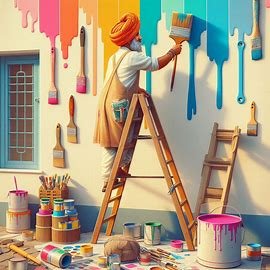
Maintaining and Caring for Textured Surfaces
Maintaining the beauty and integrity of surfaces treated with Mithila paints is essential for long-lasting satisfaction. Given the intricate designs and textures characteristic of Mithila art, proper care and maintenance can significantly extend the lifespan of these surfaces while preserving their aesthetic appeal. Employing suitable cleaning techniques is a crucial step in ensuring that your textured surfaces remain vibrant and visually striking.
When it comes to cleaning, always opt for gentle methods. Begin by dusting the surfaces with a soft cloth or a duster to remove any loose dirt or debris. For more thorough cleaning, a mild soap solution with warm water can be utilized. It is important to avoid harsh chemicals or abrasive scrubbers, as these can damage the texture or finish of the paint. Instead, use a soft sponge or microfiber cloth to gently wipe the surface, ensuring you are not too vigorous, which could lead to unintended wear.
Preventing damage to textured surfaces is equally important. Avoid placing heavy objects on textured areas that could potentially cause dents or scratches. Additionally, ensure that surfaces are shielded from excessive moisture, as this can lead to peeling or degradation of the paint over time. It is also advisable to protect textured walls from direct sunlight, which may cause fading or discoloration. Consider using curtains or blinds to moderate exposure in sunlit rooms.
Over time, it may be necessary to refresh or touch up the paint textures to maintain their original charm. Regularly assess the condition of the surfaces, looking for any signs of wear or fading. Using a small brush and matching Mithila paint, you can delicately touch up any affected areas. This simple practice can breathe new life into your textured finishes, ensuring they remain a beautiful focal point in your home.
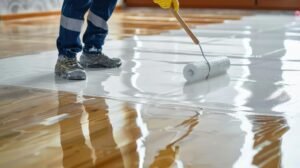
Combining Mithila Paints with Other Materials
Mithila art, with its vibrant colors and intricate designs, offers a unique opportunity to blend various materials and textures, resulting in layered, visually stimulating compositions. The versatility of Mithila paints allows them to be integrated with diverse elements such as wood, metal, and fabric, enriching the aesthetic appeal of a space or product. For instance, using Mithila paints on wood can create a stunning contrast between the natural grain of the surface and the vivid patterns of the paint. This combination not only enhances the visual interest but also maintains the organic feel of wood, making it ideal for furniture or decorative pieces.
Moreover, when Mithila paints are applied to metal surfaces, they can produce a striking industrial look infused with traditional artistry. This fusion can be particularly captivating in home decors items like lamps or wall art, where the spark of metal against the colorful paint draws attention and invites conversation. Textiles also offer an exciting canvas for Mithila paints; fabric can be dyed with these vibrant colors, allowing for one-of-a-kind curtains, cushions, or garments that reflect both contemporary style and traditional craftsmanship.
Experimentation is encouraged when combining Mithila paints with other media. For example, incorporating natural fibers or recycled materials can result in sustainable art pieces that tell a story—a perfect blend of cultural heritage and modern responsibility. Joint forms can further enhance the layered design, with textures juxtaposed to create depth and intrigue. Material combinations, such as pairing Mithila paintings with ceramics or glass, can also yield stunning results, transforming everyday items into extraordinary focal points.
In this spirit of creativity, it is essential to explore and discover new pairings that not only respect the essence of Mithila art but also elevate its impact within contemporary settings. Through thoughtful combinations, the application of Mithila paints can transcend traditional boundaries, leading to innovative, budget-friendly solutions in texture manufacturing.

Conclusion: The Future of Budget-Friendly Texture Manufacturing
In reviewing the potential of Mithila paints in the realm of budget-friendly texture manufacturing, it is evident that these vibrant and culturally rich materials represent a significant opportunity for cost-effective creativity. Mithila paints, stemming from the traditional craftsmanship of the Mithila region in India, not only offer a distinctive aesthetic appeal but also provide an eco-friendly alternative to conventional texture manufacturing methods. By incorporating local resources and promoting sustainable practices, these paints contribute to a more responsible approach to design and construction.
Throughout this discourse, we have highlighted several advantages of using Mithila paints. Their versatility allows for a wide array of applications, from home decors to artistic projects, making them an excellent option for individuals and businesses looking to optimize their budgets without sacrificing quality or aesthetic value. Furthermore, the resilience and longevity of these paints ensure that, while they are affordable, they do not compromise on performance. The integration of these materials serves not only to beautify spaces but also to celebrate and preserve a rich artistic heritage, which can add depth to modern design projects.
As you consider embarking on your own creative journey, we encourage you to explore the myriad possibilities that Mithila paints offer. Embracing these budget-friendly textures aligns with a growing trend toward sustainable design, allowing for unique, environmentally-conscious choices in your work. We invite you to share your experiences, projects, and creative endeavors with Mithila paints with the community. By doing so, you contribute not only to the appreciation of this traditional art form but also to a collective shift towards innovative and sustainable practices in the texture manufacturing landscape.


